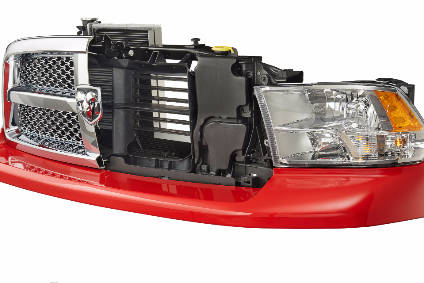
The aim of an active grille shutter (AGS) is to respond to the driving environment in order to reduce drag and improve fuel economy. During motorway driving, for example, the louvres would close thereby pushing the air around the vehicle to improve aerodynamics. If the car is towing a load or slow moving in traffic, the louvres would remain open to help maintain the best engine temperature. Given that an increasing number of cars now have an AGS, here is our round-up of the market.
Active shutters are fitted on a number of vehicles, including the Ford Focus, Chevrolet Cruze, and Toyota Prius. For example, Ford’s AGS is controlled by the car’s electronic control unit enabling the vanes to be rotated into 16 different positions, depending on the amount of cooling air required. Ford says when the shutters are closed, aerodynamics are improved by up to six percent resulting in improved fuel economy. Other automakers using AGS include BMW, Honda, Lincoln, Mazda, Mercedes-Benz, and Rolls Royce.
The design of the grille on vehicles equipped with an AGS dictates where the shutter system is positioned. For example, the Cadillac ATS generates most of its cooling from the large grille opening above the bumper bar so its active shutter is mounted behind the upper grille.
Although an AGS may appear simple in design, there are a number of challenges facing suppliers and OEMs in terms packaging, pedestrian protection, insurance ratings, engine and transmission types, cooling requirements. “All of these factors play a part in the design and manufacturing of the AGS,” said Tony Povinelli, global product line director – Active Aerodynamics, Magna International. “As new electronics [auto braking, auto cruise control], new powertrains [diesels, electric] and new legislation [pedestrian protection, CO2] are added to vehicles, the AGS must evolve to adapt to the new environment.”
Povinelli adds that this could be in the form of a super slim design, canted profiles, dual driven system with single actuator, or integration into grilles and front-end carriers. “Magna Exteriors has extensive vehicle front-end knowledge based on our fascia, grille, trim and front-end module experience, allowing us to provide solutions for these challenges while still offering a robust and cost effective product.”
Building on the auto industry’s initial research into grille shutter systems, Magna has developed and commercialised its own solution that debuted on the 2013 Dodge Dart and Ram 1500 pickup truck. The supplier says its system is applicable for any vehicle segment, including pickup trucks and SUVs, which typically receive the highest benefit in reduced fuel consumption.

US Tariffs are shifting - will you react or anticipate?
Don’t let policy changes catch you off guard. Stay proactive with real-time data and expert analysis.
By GlobalDataAnother manufacturer pushing back the technical boundaries of AGS is SRG Global Inc. Last year, the supplier launched its Integrille. “The Integrille solution brings active shutter systems to the front-most area of a vehicle to improve fuel economy, reduce weight, and lower overall system cost, while providing styling flexibility,” said SRG Global Inc’s vice president of engineering, tooling and advanced development, David Dunford. “The first and foremost advantage is that the system is integrated into the grille itself in comparison to the majority of the solutions on the market (standalone systems) which are further rearward behind the grille. The rapid adoption of these standalone systems has given us the opportunity to evolve our value proposition.”
Given the benefits of AGS – and the pressures on OEMs to meet CAFÉ standards – Povinelli believes that the market for AGS is already quite mature with the Detroit automakers and starting to accelerate with the European and Asia Pacific automakers in North America. He told us: “Magna already ships over 2.5 million AGS annually to 12 different North American vehicles. Further growth in AGS is expected, as well as the introduction of new technologies which complement the AGS and assist the customer in meeting the CAFE standards.”
In terms of how the AGS market could develop, Dunford believes that OEMs are looking for a multitude of fuel efficiency options, including materials, assembly, and execution of the reduction of complex functional parts to achieve the CAFE standards. “Shutter systems will be part of the whole approach to better fuel efficiency,” he added.



